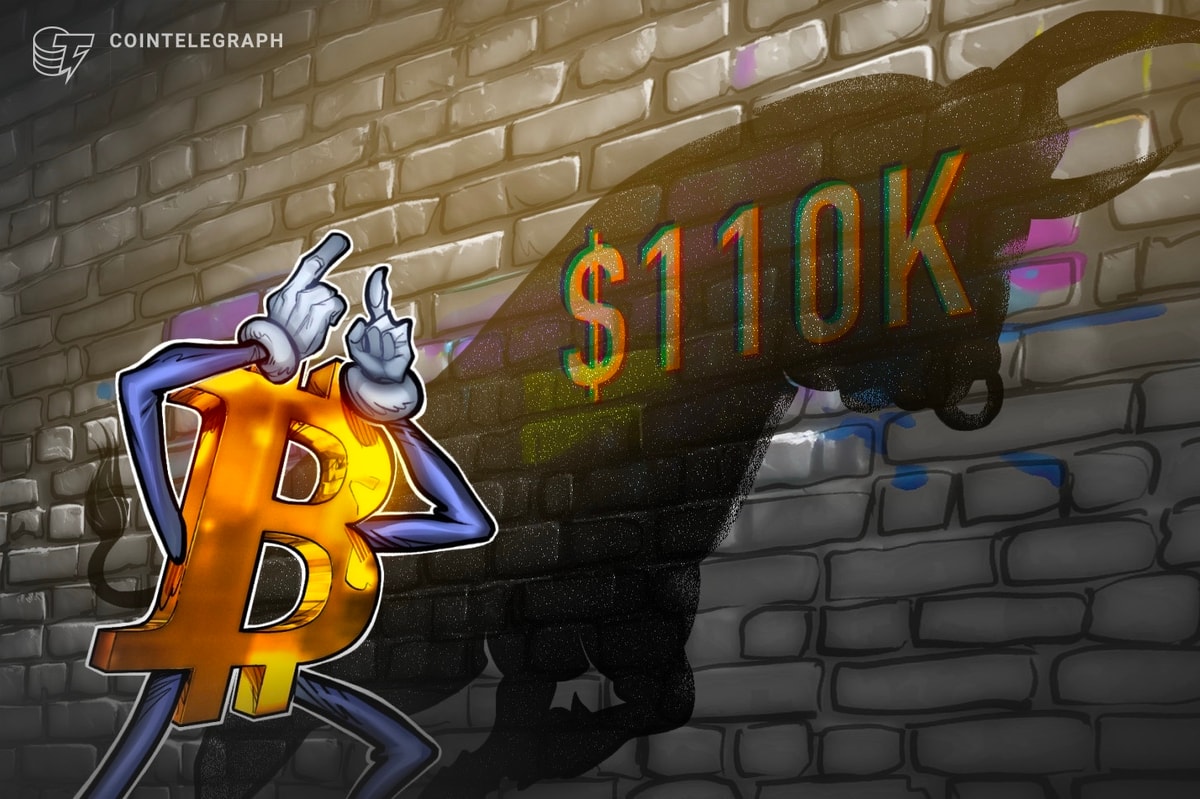Key Takeaways:
Bitcoin double bottom pattern could increase bullish momentum towards $110,000.
A CME gap near $104,000 could trigger a short-term retracement.
Stablecoin accumulation and stress on short-term holders suggests near-term volatility.
Bitcoin (BTC) exhibited a textbook double bottom pattern over the weekend, with BTC securing a weekly close above its 50-week moving average. This formation coincided with a daily order block between $98,100 and $102,000, with BTC repeatedly testing the $100,000 area before rebounding.
Following the breakdown of the bullish structure on the 4-hour chart, Bitcoin now faces resistance near $111,300, a level it could test if short-term momentum holds. However, on-chain data suggests that this progress may not be easy.
Glassnode explained that Bitcoin has rebounded near $100,000 at the 75th percentile cost basis. The next most significant hurdle is near the 85th percentile cost threshold, which is approximately $108,500. This level has historically acted as resistance during recovery moves. The percentile cost-based metric measures where the majority of investors obtained their BTC, effectively mapping the distribution of costs across the market.
However, Cointelegraph noted that there is a possibility of liquidity above $115,000, which matches the daily resistance level, with long-side liquidity close to $100,000.
Additionally, the CME gap between $103,100 and $104,000 remains a key near-term risk. A CME gap occurs when Bitcoin’s weekend price action creates a gap between Friday’s close and Monday’s open price on the Chicago Mercantile Exchange, and this gap is often “filled” as traders revisit these levels, suggesting that BTC may briefly retrace before resuming its upward trend.
With liquidity and participation dwindling, BTC could retest the weekend’s 1-hour and 4-hour order blocks before making a decisive rally, revisiting $101,000-$102,500.
Related: ‘What’s your least favorite running bull?’ 5 things you need to know about Bitcoin this week
Stablecoin strength could shape the near-term BTC outlook.
The stablecoin supply ratio (SSR) has plummeted from 18th at the start of the year to 13.1, one of the lowest levels in 2025, according to CryptoQuant data. This decline indicates an increase in stablecoin holdings relative to Bitcoin market cap, a sign of off-chain liquidity accumulation awaiting market signals.
Over the past month, the SSR has fallen from 15 to 13 and BTC remains near $105,000, suggesting buyers are awaiting confirmation before deploying capital.
Conversely, cryptocurrency analyst Darkfost observed that short-term holder (STH) inflows into Binance have increased 40% since September, from 5,000 BTC to 8,700 BTC. The realized price of STH is around $112,000, so many remain underwater and are increasingly reacting to near-term volatility. Selling pressure from this group often precedes mid-cycle swings before a broader bull run, adding near-term instability.
Related: Bitcoin, ETH ETF Sees $1.7 Billion Outflow, But Whale Buying Mitigate Price Impact.
This article does not contain investment advice or recommendations. All investment and trading activities involve risk and readers should conduct their own research when making any decisions.

